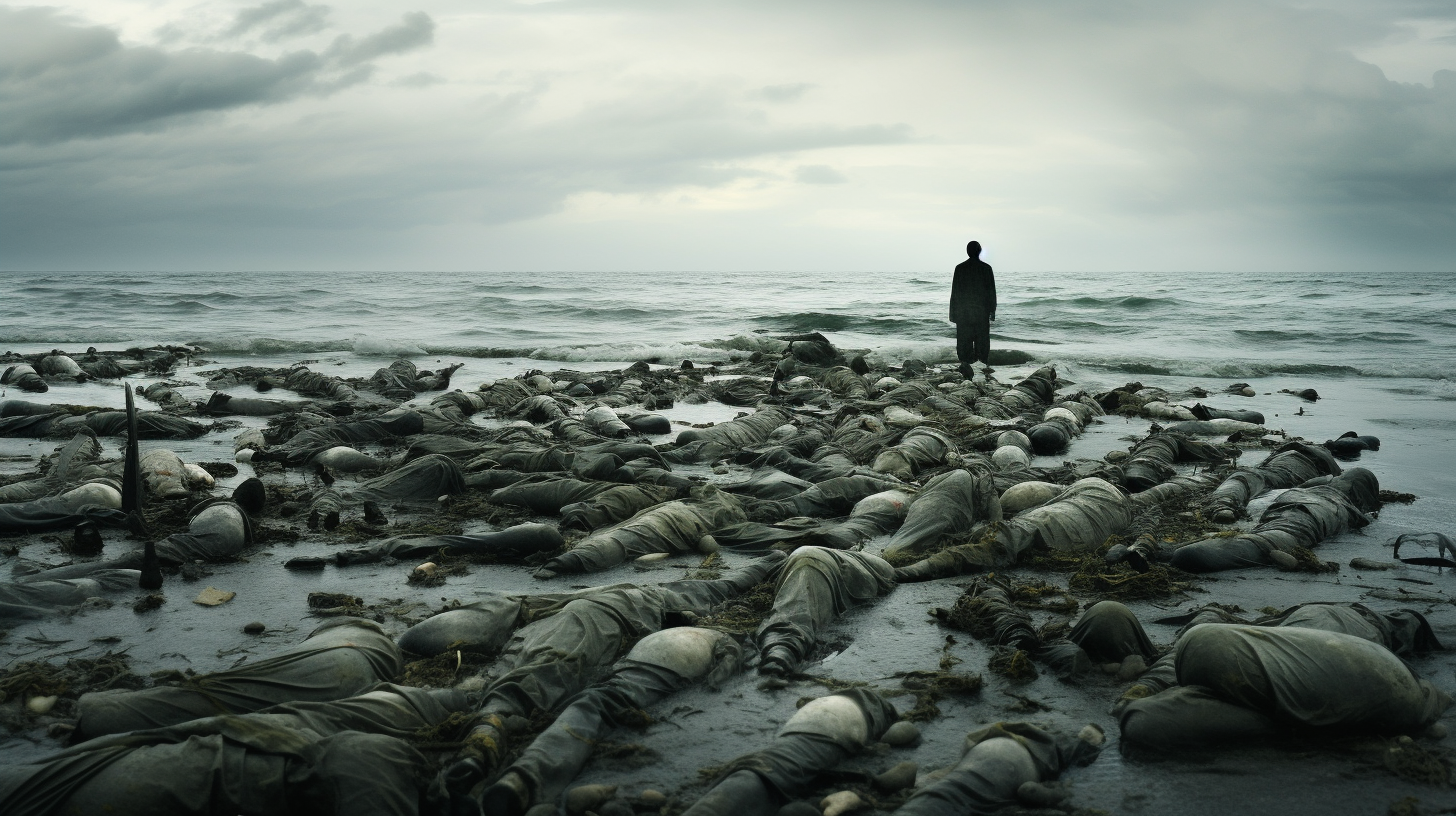The crisp, salty air that once filled the grateful lungs of ocean-side dwellers has become a perishing memory in the annals of the Suffocating Shores. The sea, once a bastion of boundless breaths, has turned treacherous, with each wave carrying not the promise of life, but the burden of breathlessness.
Along the jagged coasts where children once built sandcastles, the shorelines are now eerily silent, save for the labored gasps of both marine life and humans alike. The cause of this dystopic drama at the doorsteps of our oceans? An oxygen apocalypse in the waters, a silent disaster creeping onto our coasts, seizing the essence of life itself—the breath of the sea.
The undercurrents of climate change, magnified by relentless pollution, have choked life-giving oxygen from our waters at an alarming rate, leading to vast swathes of coastal waters transforming into dead zones. This biological blackout is not content to stay in the depths; it leeches onto land, ravaging the once-safe havens of coastal communities.
Our investigation confirms that fish are the first harbingers of this void, fleeing the suffocating grip of their native waters. Yet, their exodus is futile, as the surging dead zones reach after them like an inexorable plague. We have already heard the ocean’s muted plea in ‘Ocean Deafness – The Silent Depths Below’, but now, we face the stark silence of the surface.
Experts we’ve interviewed paint a dreary portrait of a future where the decline of coastal oxygen levels compounds the difficulties faced by those residing ‘where land greets sea’. Respiratory ailments are on the rise, hospitals overflowing, as if the air, in a harsh mimicry of dense smoke, carries with it an asphyxiating heaviness.
The survival paradox presented by ‘Air Farms: Humanity’s Last Breaths in a Choked World’ forms a macabre symmetry with our shores. There, air is commodified and available to the privileged few; here, the sea, once a public reservoir of pure air, is no more generous than the stratified air farms inland.
Our feature includes dialogues with disenfranchised fishermen, who are not only losing their livelihoods but are often found amongst those queuing for pricey oxygen shots, a luxury they can scarcely afford. This brings to light an environmental classism, where the right to breathe freely, both on land and by the sea, has become a currency only a privileged few can wield.
In this doomsday tapestry, however, there is the unexpected—a bizarrely burgeoning black market dealing in what could be termed ‘black-gilled’ contraband. Providers of illicit oxygen, ironically dubbed ‘gill-gangs’, exploit the desperation wrought by thinning air, selling stolen canisters of life-giving gas at exorbitant rates. ‘Breathe or break the bank’ seems to be the diabolical doctrine of the day.
The article delves into the scientific, socio-economic, and emotional substrata of this phenomenon. From portraits of eroding human resilience to critical analyses of the environmental and policy failures leading to this plight, the reader is invited to gaze upon a mirror of potential reality, grimly reflecting not only what is, but what might still come.
As the planetary plea for help goes unabated, we’re left to wonder if this vision of suffocating shores isn’t a final call for action—a siren warning before the last breath is stolen by the sea.
